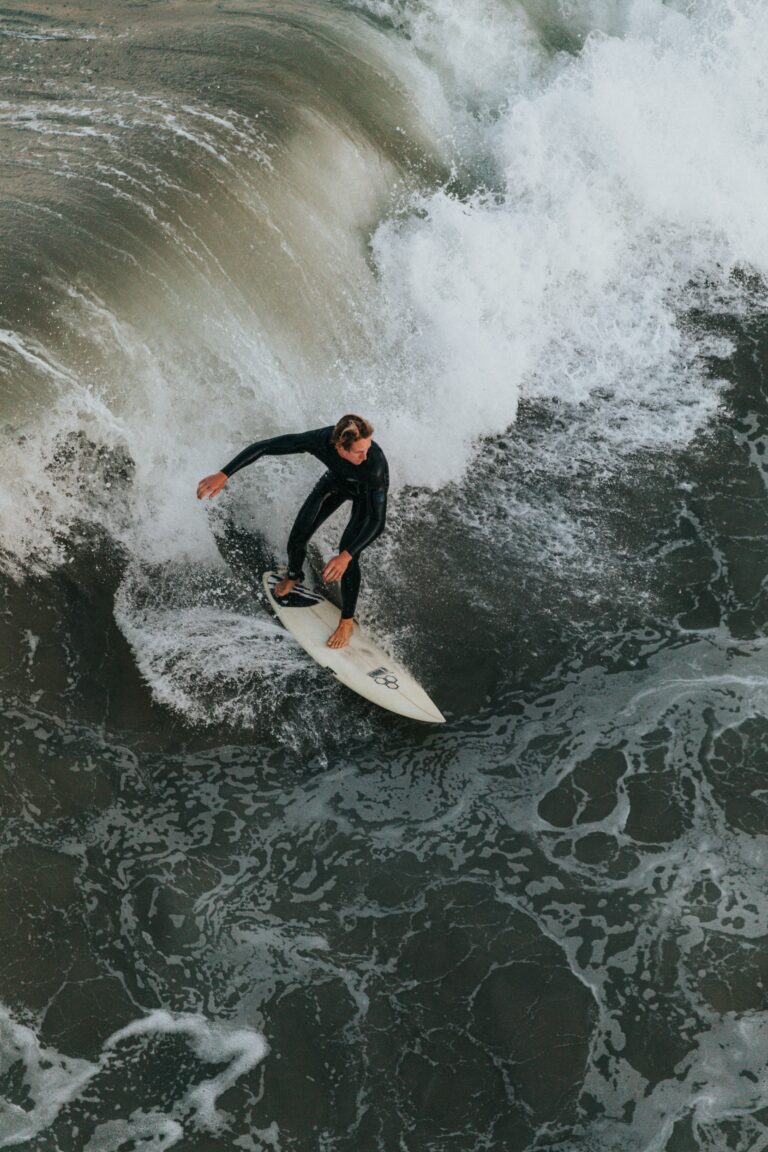Surfing, often regarded as a thrilling sport and a serene communion with nature, is deeply rooted in the science of waves. From the moment a swell begins its journey across the ocean to the exhilarating ride on a surfboard, the intricate mechanisms behind wave formation and behavior shape every aspect of the surfing experience. In this article, we delve into the fascinating science of surfing, exploring how waves are formed and become rideable, offering a deeper understanding of the dynamic interplay between the ocean and the surfer.
Factors Affecting Wave Quality
Bathymetry: The Submerged Terrain’s Influence
Bathymetry, the study of underwater terrain, plays a crucial role in shaping wave quality. The contours and features of the seabed profoundly impact how waves behave as they travel towards the shore.
In shallower regions, where the ocean floor rises gradually, waves tend to increase in height and steepness. This is due to the interaction between the waves and the seabed, causing them to shoal and break more forcefully. Conversely, in deeper waters with a more gradual slope, waves maintain their energy and form, resulting in smoother and less turbulent conditions.
Distinct bathymetric features such as reefs, sandbars, and underwater ridges can significantly alter wave patterns. These features can either amplify or dissipate wave energy, leading to localized variations in wave height, direction, and shape. For instance, submerged obstacles like reefs may cause waves to refract, creating peaky and unpredictable surf conditions in certain areas.
Understanding the bathymetry of a coastline is essential for predicting and managing wave quality. Coastal engineers and surf forecasters utilize bathymetric maps and data to assess how underwater topography influences wave behavior, aiding in coastal development, navigation, and recreational activities.
Tide, Currents, and Wind: Variables in Wave Behavior
The dynamic interplay between tide, currents, and wind significantly affects wave behavior, contributing to the variability in wave quality experienced along coastlines worldwide.
Tides, caused by the gravitational pull of the moon and the sun, result in the periodic rise and fall of sea levels. The changing water levels influence wave characteristics, with high tide generally producing deeper water and stronger waves compared to low tide. Additionally, tidal currents can alter wave direction and speed, impacting surfing conditions.
Wind is another critical factor influencing wave formation and quality. Wind generates surface friction, transferring energy to the water and creating ripples that evolve into waves. The strength, duration, and direction of the wind determine the size, shape, and consistency of waves. Offshore winds, blowing from the land towards the sea, typically produce cleaner and more organized waves ideal for surfing, while onshore winds can lead to choppy and messy surf conditions.
Ocean currents, driven by a combination of wind, temperature, and salinity gradients, also play a role in shaping waves. These currents can either aid or hinder wave propagation, affecting wave height, speed, and direction. Coastal areas influenced by strong currents often exhibit unique wave patterns, influenced by the complex interaction between tidal flows, wind-driven currents, and local bathymetry.
Understanding the dynamic relationship between tide, currents, and wind is essential for surfers, sailors, and coastal planners alike. By analyzing these variables, individuals can anticipate changes in wave quality and make informed decisions regarding water-based activities and coastal management strategies.
Wave Interference: Constructive and Destructive Patterns
Wave interference, a fundamental principle of wave physics, refers to the interaction between two or more waves traveling through the same medium. This phenomenon can either enhance wave height and intensity (constructive interference) or diminish wave amplitude (destructive interference), influencing overall wave quality.
Constructive interference occurs when waves align in phase, combining their energies to produce a larger resultant wave. This often leads to the formation of powerful, well-defined surf breaks favored by surfers seeking exhilarating rides. Coastal regions characterized by consistent wave trains and favorable bathymetry are prime locations for constructive interference to occur regularly.
Conversely, destructive interference arises when waves are out of phase, causing them to partially or completely cancel each other out. This can result in subdued wave activity and less desirable surfing conditions, characterized by weak, inconsistent waves lacking the energy and form typically associated with optimal surfing conditions.
The occurrence of constructive or destructive interference depends on various factors, including wave frequency, amplitude, and direction. Waves with similar characteristics are more likely to interfere constructively, amplifying each other’s effects. Conversely, waves with opposing attributes may experience destructive interference, reducing overall wave energy and quality.
Coastal environments experience a continuous interplay of constructive and destructive wave interference, influenced by factors such as wave refraction, diffraction, and reflection. Understanding these phenomena is essential for surfers and coastal engineers, as it allows for the prediction and management of wave quality along coastlines worldwide.




